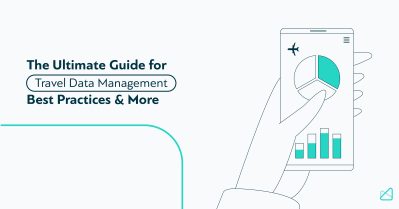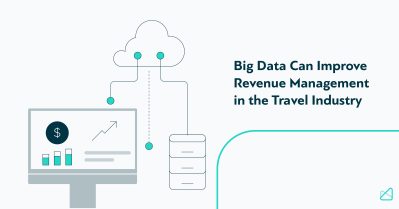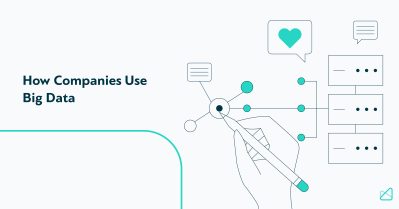Demand Forecasting: Factors Affecting It, Why It is Important, & More

Markets of all sizes around the globe are becoming oversaturated. Meanwhile, harsh competition has made them volatile as well. Consumers have access to more information, which tremendously helps them in making the right purchasing decision. All of it makes the future uncertain for businesses.
How does a business thrive and achieve objectives in such a complex and dynamic landscape? The answer lies in data-driven demand forecasting. How can a strategy rooted in economics enable a business to future-proof its operation?
Before we dive into the specifics, let’s look at what demand forecasting is and why it is important.
What is demand forecasting?
Demand forecasting is one of many methodologies managerial economics brings to businesses of all sizes. It enables companies to solve real-world problems and improve their economic power of short-term and long-term planning decisions.
There are plenty of demand forecasting definitions out there. Here’s one by Cundiff and Still that outlines it in an easy-to-understand fashion: “Demand forecasting is an estimate of sales during a specified future period based on the proposed marketing plan and a set of particular uncontrollable and competitive forces.”
As one of the sales forecasting methods, demand forecasting helps businesses make informed decisions to better prepare for the future. When companies discover future retail demand details, they can make decisions ranging from making changes in the supply chain and inventory to improving fund management and adopting a new pricing policy.
What are the types of forecasting?
Demand forecasting can be done for different periods. There are three types of forecasting based on the period. Let’s quickly go through each one of them.
Short-term forecasting refers to forecasts for a couple of months to up to a year. These forecasts are usually based on the workforce’s knowledge and experience. For instance, short term forecast reports can help organizations fine-tune pricing and distribution policies.
Long-term forecasting encompasses forecasts for periods of several years. They can take into account future fluctuations, up to 10 years from the moment of forecasting. These forecasts are based on analysis and statistical models, and they can help businesses plan the launch of a new product, penetrate a new market or business expansion. In some cases, it needs to be for example getting millennial travel statistics to help you understand that segment better.
Forecasting for very long periods refers to forecasts for periods of more than a decade. These forecasts can have different objectives ranging from determining economic development to population growth.
What is the importance of demand forecasting?
As demand forecasting gains traction across verticals, it’s important to learn why companies are choosing it. The importance of demand forecasting lies in the many benefits it brings to a business. A case-study reports that it helped a company increase the sell-through rate by 18%, reduce inventory cost by 7%, and increase customer re-contracts by 13%.
Achieving business objectives is the first benefit on our list. If you set the goal to increase your market share by selling specific products, demand forecasting can help you estimate the demand and see whether your business objectives are realistic.
Demand forecasting can help you stay on top of your business finances. When you have access to estimated costs and revenue, you can future-proof your budget and ensure that every business move is profitable.
Furthermore, demand forecasting can help you make data-driven hiring decisions. For example, when you learn the retail demand for your products in the market, you can plan the production. It helps you discover whether you need to hire more workers to meet the production goals.
You can leverage demand forecasting reports to assess whether it’s a good time to expand your business. For example, increased demand for the product implies that you can proceed with your business expansion plan.
What are the factors affecting sales forecasting?
There are a lot of factors involved in the demand forecasting equation. To completely understand the concept, you need to discover the factors affecting it. Here are the ones with the most impact.
The type of goods is probably the most important factor that affects forecasting. Forecasting will introduce new techniques and deliver different results when you demand forecasting for products that already exist in a market instead of products that will be launched for the first time.
When you’re forecasting for new goods, you don’t have access to demand, competition, and alternative product information. Goods also encompass services. Forecasting for services and physical products is not the same.
As a second factor, we have a competition level. Demand is a dynamic concept. The more competitors and product alternatives are present in the market, the harder the demand forecasting becomes. The competition level contains sub-factors, such as the number of alternative products and competitors.
The price of goods is also a factor affecting forecasting. Even the subtle change in a pricing policy can influence the demand forecasting process. In one extensive survey, 90% of responders agreed that it’s among the top important factors affecting forecasting.
Technological achievements can also affect demand forecasting. It especially applies to businesses in the IT sector as various technological innovations power most of their products. For example, new tech can render various products obsolete, making the demand forecasting for them extremely challenging.
Finally, we have economic development as a factor affecting sales forecasting. Positive and negative developments in the economies have the power to make demand forecasting also positive and negative.
What are the forecasting techniques?
Forecasting techniques refer to specific demand forecasting research methodologies. They can be divided into three groups – surveys, statistical methods, and machine learning.
Survey-based forecasting techniques are developed to collect information from the workforce or established experts in the field. The most popular survey methods include expert’s opinion poll, Delphi method, and market experiment method.
The statistical methods leverage past business data. Thanks to sophisticated statistical techniques, businesses can give these data meaning and use it to gain valuable insights and discover patterns. Statistical methods include trend projection, barometric, and econometric methods.
Machine learning is the newest forecasting technique. It’s a software system able to learn from the data you feed to it to deliver insightful demand forecasts.
Demand forecasting is a critical business process. It can help you future-proof your organization and improve and optimize your marketing, production, sales, recruitment, and budgeting processes. As you can see, there are many factors involved in the process, including the type of goods, competition, pricing, and technology. All of it makes demand forecasting more challenging.
Subscribe to
our newsletter
Yay! You are now
subscribed to our
newsletter
Mize is the leading hotel booking optimization solution in the world. With over 170 partners using our fintech products, Mize creates new extra profit for the hotel booking industry using its fully automated proprietary technology and has generated hundreds of millions of dollars in revenue across its suite of products for its partners. Mize was founded in 2016 with its headquarters in Tel Aviv and offices worldwide.
Related Posts

The Ultimate Guide for Travel Data Management: Best Practices & More
14 min. As data becomes increasingly important across verticals, it’s essential to understand its role in the travel industry. Most importantly, understand how to leverage it to make informed business decisions and improve your internal processes and travel experience. After all, data will play a pivotal role in helping the tourism sector’s market volume reach […]

Big Data Can Improve Revenue Management in the Travel Industry
4 min. Big data has become a vital asset in many different industries in recent years. With so many people sharing their information online and platforms logging customer behavior, there’s a need for an efficient way to process all that raw information. The travel industry is no different, as owners and managers are constantly discovering […]

3 Ways How Companies Use Big Data
10 min. “Data is the new soil because, for me, it feels like a fertile, creative medium. Over the years, online, we’ve laid down a huge amount of information and data, and we irrigate it with networks and connectivity.” David Mccandless 2020 statistics reported by bornfight.com show that 90% of the world’s data has been […]